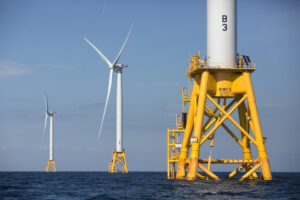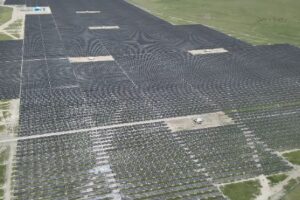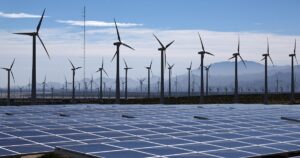The Section 48 ITC is finally getting an update. What does it mean for clean energy?

The Department of the Treasury and the Internal Revenue Service have issued proposed regulations updating rules for the investment tax credit (ITC) under Section 48 that have remained unchanged since 1987.
The proposals update the types of energy properties eligible for the section 48 ITC, reflecting changes in the energy industry, technological advances, and updates from the Inflation Reduction Act of 2022 (IRA).
The Notice of Proposed Rulemaking (NPRM) provides clarity around the eligibility of power conditioning and transfer equipment like subsea export cables used in offshore wind projects, as well as certain power conditioning equipment located in onshore substations. It also includes proposed rules around the eligibility of standalone battery storage for the ITC, as well as the inclusion of costs of interconnection-related property for lower-output clean energy installations.
For the American Council on Renewable Energy (ACORE) and its executive vice president of policy and programs, Jose Zayas, this guidance brings much-needed certainty to current and future project development efforts.
“The work of implementing IRA is not yet finished, but Treasury’s latest notice of proposed rulemaking positions the industry to take full advantage of its landmark clean energy tax package sooner rather than later,” he told Renewable Energy World.
“Also, by leaving the door open for additional technologies to qualify, the guidance fittingly embodies the constant drive for innovation in the renewable energy sector.”
Abigail Ross Hopper, president and CEO of the Solar Energy Industries Association (SEIA), called this good news for America’s clean energy economy.
“Solar and storage companies have announced over $100 billion of investments since the Inflation Reduction Act (IRA) was enacted, but this economic growth can’t materialize without clear rules for each provision in the law,” she said. “(This) proposal provides more clarity and will help to drive clean energy deployment in the United States.”
The proposed regulations also provide definitions for energy properties for which the ITC was available before the IRA. These include, but are not limited to:
- Solar process heat
- Fiber-optic solar property
- Combined heat and power system property
- Qualified fuel cell property
- Qualified microturbine property
Zayas says this “(serves) as a reminder of the IRA’s impressive technological breadth, with important details on fast-growing sectors including offshore wind and battery storage.”
“One of the best parts of the IRA is its provisions to incentivize energy storage,” notes SEIA’s Hopper. “SEIA secured a crucial win in this proposal that expands eligibility for the Investment Tax Credit to customers that install storage with their solar system.“
The IRA also added new provisions to the ITC to allow smaller projects to include the cost of certain types of interconnection property in their credit amount. The proposed regulations provide general rules for the ITC including the application of the “80/20” rule to retrofitted energy property, dual-use property, and issues related to multiple owners of an energy property.
ACORE’s Zayas thinks the Treasury’s “function-oriented” approach to determining eligibility for the credit will help ensure consistent treatment across technologies without stifling progress.
Where do we go from here?
ACORE’s Zayas said only “time will tell” the impacts of the Section 48 ITC update, but its comprehensive nature signals near-term progress for a vast array of renewable project types.
“Given the economic headwinds that many solar and storage companies are facing, we are continuing to fully evaluate the details in this guidance to guard against any potential unintended consequences that might undermine our ability to rapidly deploy clean energy projects of all sizes,” Hopper cautioned.
Subscribe today to the all-new Factor This! podcast from Renewable Energy World. This podcast is designed specifically for the solar industry and is available wherever you get your podcasts.
ACORE is awaiting more Treasury guidance on the clean hydrogen production tax credit under the IRA and for final guidance on other key provisions of the law, such as transferability and direct pay, domestic content, and energy communities.
“Certainty in these areas is critical for the sector to fully leverage the IRA’s renewable energy capital stack,” Zayas added.
One critical missing link, Zayas noted, is legislation providing access to the ITC for standalone, long-distance, high-voltage transmission lines. He added that transmission is crucial to improving grid reliability and facilitating the energy transition.
Hopper said SEIA plans to continue its advocacy at Treasury, and with the broader Biden administration, to capitalize on the “historic potential of the IRA and deliver affordable, reliable power to every home and business in this country.”




